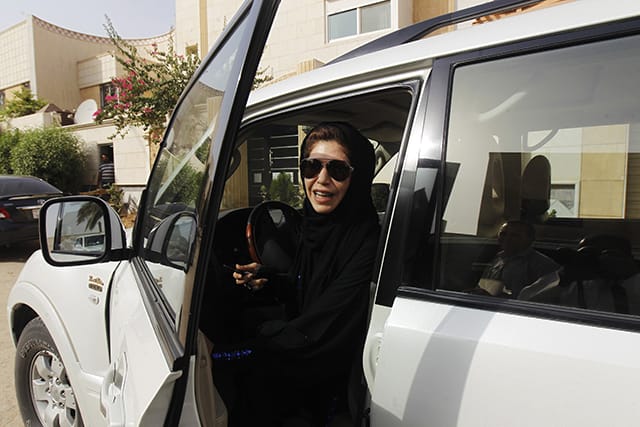By June 2018, 32 million Saudi women will be allowed to drive.
By June 2018, Saudi women will be allowed to drive. With virtually half of the country’s 32 million citizens gaining access to individual and independent transportation, this is a game changer for the Saudi economy.
The first economic actor to latch on to the winds of change is, of course, the car industry.
“We are currently putting together our new strategy to try and get the biggest possible slice from the pie,” says Salman Sultan, public relations and social media manager at Jaguar Land Rover (JLR) Middle East North Africa (MENA).

Saudi Arabia is currently JLR’s second-biggest MENA market in terms of sales, after the United Arab Emirates. With the influx of women drivers, the manufacturer expects the kingdom to become its leading market.
“There is an unprecedented potential with the new drivers, although some women were already buying cars for their chauffeurs to drive,” says Sultan. “We foresee a change in demand. We expect to sell more driver-focused vehicles—possibly smaller cars—and we see great prospects with customization options,” he adds.
Beyond car retailers, an entire ecosystem is gearing up to welcome the new drivers: Local banks look forward to an increase in car loans, advertising firms are planning elaborate new ads to target women and driving schools are mushrooming around the country.
There is a downside, however: Lifting the driving ban will bring uncertainty to those who made a living from driving women around. According to a 2017 labor survey released by the Saudi General Authority for Statistics, there were 1.3 million chauffeurs in the kingdom, and their jobs might not be renewed so easily. The same goes for taxi and private-vehicle companies such as Uber, which recently boasted about carrying an 80% female clientele in Saudi Arabia—or its regional equivalent, Careem.
But while the wealthier classes hire chauffeurs to transport them to work and run errands, Saudi middle-class households will potentially benefit greatly from increased mobility.
Last year, 54% of Saudi university graduates were women, many who found the driving ban to be an important obstacle to joining the labor market. Giving more women physical access to the workplace will surely boost job creation.
Lifting the driving ban meshes with Saudi Arabia’s Vision 2030 reform plan to prepare the economy for a post-oil future.
Interestingly, the policy shift was not announced from Riyadh but from the Saudi embassy in Washington. The idea was to encourage foreign investors to see Saudi Arabia as a changing market rather than a backward, uninviting place.
By June 2018, Saudi women will drive—but they will still need a male guardian’s approval to have a passport, travel abroad or open a bank account.



